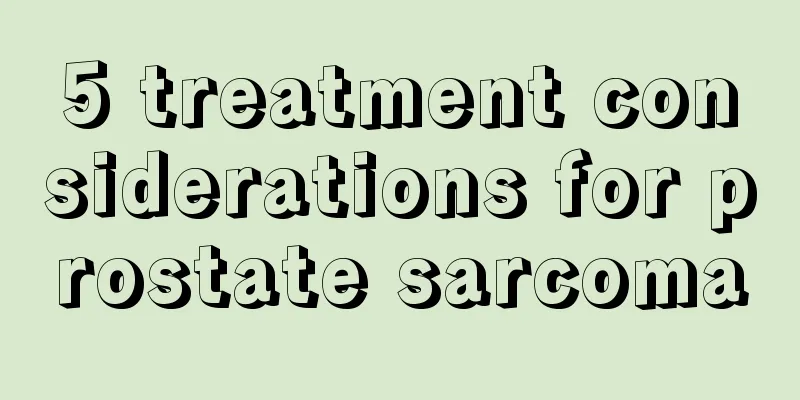How to treat nasopharyngeal carcinoma metastasis to cervical lymph nodes

|
Metastasis of nasopharyngeal carcinoma to the cervical lymph nodes can be treated with a combination of radiotherapy, chemotherapy, and surgery. The specific treatment plan needs to be tailored to the patient's disease stage, physical condition, and pathological characteristics. Radiotherapy is the main treatment for nasopharyngeal carcinoma and its lymph node metastasis. Its high-precision positioning technology, such as intensity-modulated radiation therapy (IMRT), can effectively target cancer cells while reducing damage to surrounding normal tissues. Radiotherapy is usually the first choice for local treatment, especially for patients with metastasis to the cervical lymph nodes. Chemotherapy is often used in combination with radiotherapy to remove tiny lesions that may be missed by radiotherapy. Commonly used drugs include cisplatin (to enhance the effect of radiotherapy), gemcitabine, paclitaxel and other new chemotherapy drugs, which can more effectively inhibit the spread of cancer cells. For some lymph node lesions that remain after radiotherapy and chemotherapy, surgical removal may also be considered. Neck lymph node dissection is an important one of them. Through precise surgery, the mutated lymphatic tissue can be completely removed to reduce the risk of recurrence, but this needs to be judged according to the progression of the cancer. Radiotherapy is the main treatment for nasopharyngeal carcinoma and its lymph node metastasis. Its high-precision positioning technology, such as intensity-modulated radiation therapy (IMRT), can effectively target cancer cells while reducing damage to surrounding normal tissues. Radiotherapy is usually the first choice for local treatment, especially for patients with metastasis to the cervical lymph nodes. Chemotherapy is often used in combination with radiotherapy to remove tiny lesions that may be missed by radiotherapy. Commonly used drugs include cisplatin (to enhance the effect of radiotherapy), gemcitabine, paclitaxel and other new chemotherapy drugs, which can more effectively inhibit the spread of cancer cells. For some lymph node lesions that remain after radiotherapy and chemotherapy, surgical removal may also be considered. Neck lymph node dissection is an important one of them. Through precise surgery, the mutated lymphatic tissue can be completely removed to reduce the risk of recurrence, but this needs to be judged according to the progression of the cancer. In daily life, paying attention to a balanced diet and nutritional support can help recovery, such as consuming more high-protein foods (such as fish and soy products) and supplementing with fruits and vegetables rich in vitamin C (such as citrus, kiwi, etc.) to enhance immunity. Moderate low-intensity aerobic exercise such as walking can also help restore physical strength. Regular follow-up visits are required during treatment, and professional doctors will evaluate the treatment effect and deal with possible adverse reactions. If obvious tumor recurrence or pain occurs during treatment, the doctor should be informed in time to avoid missing the best time to adjust the treatment plan. |
<<: How long after teratoma surgery can I exercise
>>: What causes left ovarian teratoma?
Recommend
What are metal porcelain teeth
When people reach a certain age, their teeth will...
How to choose a vacuum cleaner
Nowadays, society is developing rapidly and peopl...
What will happen if bladder cancer recurs and is not treated
Bladder cancer refers to a variety of malignant t...
What diseases are chronic diseases
Disease is something we cannot control. When some...
What can I use to soak jeans so that they won't fade
Jeans are a type of clothing that many people lik...
Persimmon stewed with tofu
Persimmon stewed with tofu, here refers to tomato...
How long can you live with pain in the late stage of liver cancer? Nursing methods for pain in the late stage of liver cancer
I believe everyone has a certain understanding of...
Effects of Bee Venom Essence
Bee venom essence mainly refers to the venom glan...
What is the most common cause of bladder cancer
When it comes to bladder cancer, we all know some...
Dietary considerations for prostate cancer
Prostate cancer is a very distressing disease for...
How do parasites enter the human body?
Everyone is very afraid of parasites because they...
What to do if upper eyelids droop
When people reach a certain age, their skin will ...
What to eat when you have low blood sugar symptoms
People must control their blood sugar health in t...
Eye drops that lower intraocular pressure
Eye drops are a common medicine in our lives. Eye...
Is rectal tumor serious?
With the improvement of people's quality of l...









